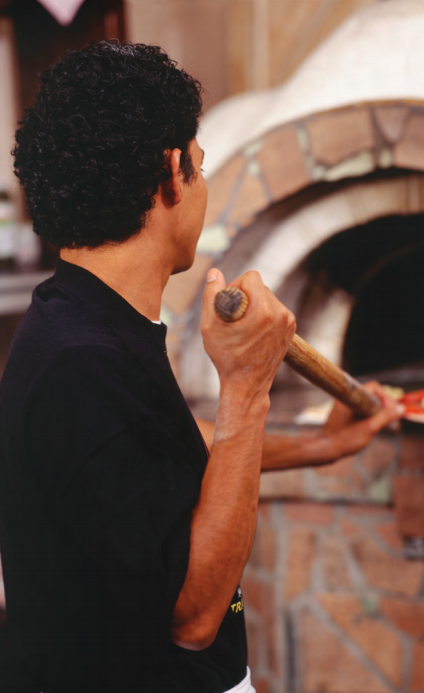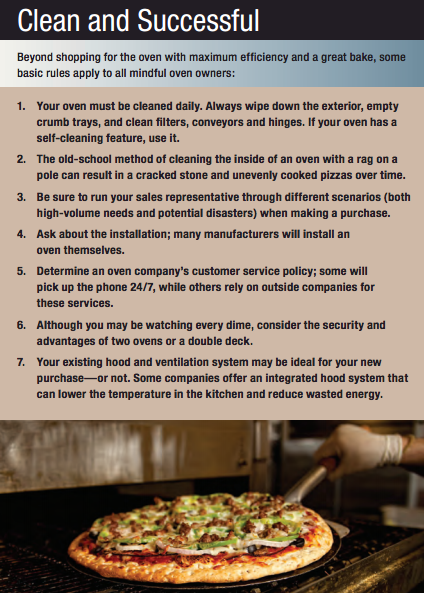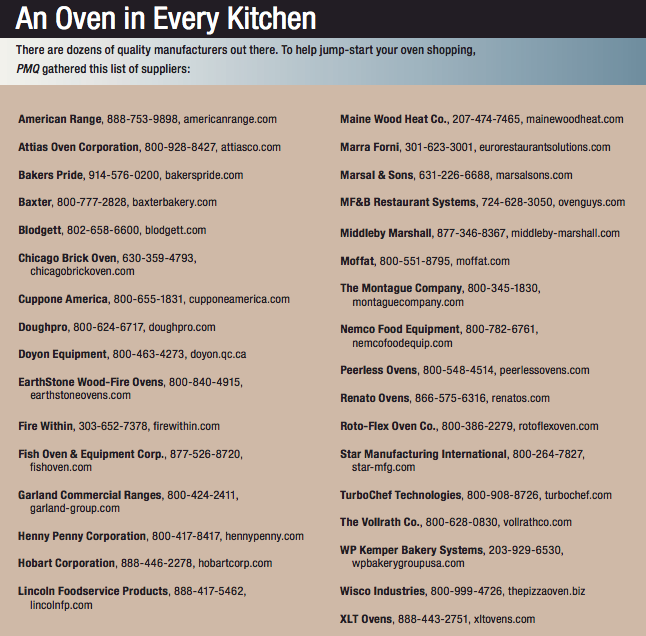 “The first identifiable ovens, dating from 20,000 B.C., were found in Ukraine. These were pits in which hot coals were covered by a layer of ashes; the food was set on top, wrapped up in leaves, and the pit covered with earth,” says Ancient Inventions by Peter James and Nick Thorpe. While this technique may still be practiced in some parts of the world, it’s safe to say that ovens have come a long way!
“The first identifiable ovens, dating from 20,000 B.C., were found in Ukraine. These were pits in which hot coals were covered by a layer of ashes; the food was set on top, wrapped up in leaves, and the pit covered with earth,” says Ancient Inventions by Peter James and Nick Thorpe. While this technique may still be practiced in some parts of the world, it’s safe to say that ovens have come a long way!
However, today, buying an oven requires substantial financial investment and a long-term commitment to cleaning, staff training and, occasionally, repairs. As such, you don’t want to make this decision without weighing your options. There are different advantages to many oven types on the market, whether gas or electric, deck, rotating deck, combination, conveyor or wood-fired. No matter your preference, one fact rings true: “At the end of the day, what it comes down to is the consistency of the bake and the pizza,” says David Berger, founder of Cuppone America in Manteca, California. “You have to create a consistent product to be great at what you do.”
Oven Types
Gas vs. electric. As Brian Arnold, product specialist for Garland Commercial Ranges in Mississauga, Ontario, Canada, points out, for many operators, energy costs remain a crucial factor. Thus, many manufacturers sell more gas-powered ovens than electric ones. “In North America, energy is still generally cheaper with gas,” he says. However, with some high-production ovens, electric technology can be just as energy-efficient, if not more. Some ovens can use less than two kilowatts per hour, with (when the oven is full) up to 83.8% of the energy going into the baking of pizzas. Electric ovens can also be ideal for restaurants without set gas lines. For bars, concession stands and convenience stores, smaller electric countertop ovens can provide pizza ovenlike results on a smaller scale and for a reduced price tag.

Decked out. Deck ovens, known for creating crispy crusts in a compact space, are a long-standing staple in the pizza business—ideal for by-the-sliceand highend eateries alike. They’re rugged, reliable and, when cleaned daily, can stand to be tested over a generation of pizza baking. Most deck ovens, however, have hot spots; knowing how to maneuver a pie around the oven requires a skilled pizza maker. But for high-volume operations, a different kind of deck oven can achieve both consistency and volume. Instead of employees moving the pie around manually, some horizontally rotating deck ovens cook pies without the vigilance needed by a traditional deck. Additionally, glass doors that allow you to view the pizzas without opening the door can prevent frequent heat loss. “Every time you open the door on a deck oven, heat escapes, and it takes that much time to recover,” explains Roger Dunfield, president of Roto-Flex Oven Co. in San Antonio.
Combination solutions. Wet heat (like steam) and dry heat (like that used in a convection oven) have very different utilizations in the kitchen. However, some of the latest technology can combine these methods in one appliance. Combination ovens are great space-savers and, with multiple racks and compartments, these cabinet-looking appliances are ideal for quickservice operations with a variety of menu options. “It’s all about creating the perfect cooking environment,” says Jason Moles, field marketing manager at Henny Penny Corporation in Eaton, Ohio. “With a combination oven, you can do everything from making bread to steaming vegetables and grilling. Ultimately, it can replace a number of pieces in your operation.”
Work the line. For high-output operations (especially those who depend mainly on delivery), conveyor ovens can indeed be the ideal oven. Often stacked two or three levels high, this method can provide speed and ease of baking. In fact, Domino’s (dominos.com) franchisee Brain Edler set the record for most pizzas baked in an hour in January 2011 when he cranked out 206 medium cheese pizzas in 60 minutes using a conveyor oven. However, there are further advantages: With easily repairable designs and green technology, many models can be inexpensive to operate. “We’ve seen the tides turning toward customers wanting something sturdy, reliable and easily repaired,” says Pete Goodman, vice president of sales at XLT Ovens in Wichita, Kansas.
Fire it up. Wood-fired ovens are, to say the least, different animals than their electric and gas-burning cousins. This method not only offers an always unique product and an interesting sight for the customer, but can also provide a catering opportunity. A growing number of pizzaioli are building their own ovens, flying in master builders to design and deliver wood-fired ovens to their homes and businesses, and some even building the ovens into trucks and trailers; the method brings an artisan touch to the pizza industry.
However, with this type of oven, one of your principal concerns will be the wood you burn. “I’ve been in the restaurant industry almost 50 years, and the best fuels are always hard, fruit-bearing woods,” says Renato Riccio, founder of Renato Ovens in Garland, Texas. “Generally, oak, pecan and mesquite are readily available in any part of the country. Stay away from pine, spruce or palm—they make a lot of pollution and tend to pop and explode as they burn. You might end up with splinters on your pizza.”
In some commercial ovens, wood is becoming less of a primary heat source and more of a flavor-enhancing addition; pizza makers can increase efficiency and reduce pollution by incorporating gas power to maintain temperature while the wood adds flavor. “It’s a little more work to install,” says Emiliano Marra, vice president of Italian manufacturer Marra Forni, “but it creates a cleaner and more reliable oven. It’s the best of both worlds.”
Even wood-fired purists have found that this method can bring in revenue another way—through catering. At a growing rate, wood-fired manufacturers are developing catering trailers that can bring wood-fired flavor to nearly any venue. Joseph Pergolizzi, founder of The Fire Within in Boulder, Colorado, a company that specializes in trailer oven production and education, has seen many operators expand their businesses with favorable results. “However, you have to understand the oven itself,” he says.
Prepare for Repairs
For repairs, some manufacturers offer extended warranties and a hands-on repair policy. After all, revenue lost due to your oven sitting idle for a few days may equal the cost of a new one. Additionally, some manufacturers offer technology that’s ideal for small to medium chains, with all of the technical components contained in one removable compartment—so when an oven breaks down, you can install a backup component to resume business. “It’s ideal for someone who has multiple stores—you can have your oven up and running again in 20 minutes instead of waiting for a service company,” says Michael French, president of MF&B Restaurant Systems in Dunbar, Pennsylvania. “If your oven breaks down on a Friday night, the odds of having a repair company come out and get it running again are pretty slim these days.”

Andrew Abernathy is PMQ’s associate editor.












